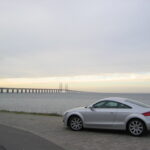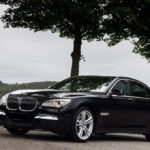3 Reasons Why Hatchbacks are Popular in Europe
While SUVs continue to rise and take over the car market around the world, the hatchback is one of the few body styles that keeps selling reasonably well, especially in Europe. Do you know why it happens?
Why are Hatchbacks so Popular in Europe?
Basically, hatchbacks concentrate several values which are important for the European customer. They became a trend decades ago because of the industry, maintained strong sales over the years because of some historical events, and now enjoy the status of cultural icons in that region.
Hatchbacks have become a part of Europe’s automotive culture just like large pick-up trucks in the United States, microcars in Japan, and car-based pick-ups in Australia. Hatchbacks are popular in Brazil as well, but for different reasons: they are usually the cheapest options available in a given manufacturer’s lineup.
Also read: 3 Reasons Why Americans Prefer Large Cars
How Popular are Hatchbacks in Europe?
Throughout the first half of this year, hatchbacks of all brands and segments sold over one million units in Europe. They are also the bestsellers when we analyze sales figures by model.
The automotive standard has created an unspoken rule of limiting hatchbacks to the compact and midsize segments. While that harms profit margins for the automakers, it helps those cars reach high sales volumes.
Besides that, hatchbacks are highly competitive in their price ranges. Compact and midsize sedans are not popular in Europe, minivans have almost disappeared, station wagons have not yet reached relevant sales figures once again, and SUVs are usually more expensive.
Over the years, the European market has worked with four segments of hatchbacks: subcompact (for example, Volkswagen up!), compact (Opel Corsa), midsize (Ford Focus), and large (Renault Vel Satis). The largest one used to include the notchback niche, which could be visually described as halfway between hatchback and sedan but with a full-height trunk lid.
Large hatchbacks disappeared in the early 2000s due to lack of demand, especially outside Europe. Subcompacts have been declining in the past few years because their profit margins are too low to justify their production in times of increasing environmental and technological demands. Midsize hatchbacks are expected to be the latest victims because of the rise of SUVs.
3 Reasons Why Hatchbacks are Popular in Europe
#1: Big Cities with Narrow Streets
Most European capitals were built long before automobiles even existed, so their streets were definitely not planned to accommodate them. Depending on the region, only compact cars such as hatchbacks can be comfortably and safely driven on a daily basis in those cities.
The hatchback is one of the shortest body styles available nowadays; sedans, for example, feature a stretched trunk while SUVs are taller and longer as a whole. As a result, hatchbacks are the smallest cars in every market segment, and that makes them easier to steer in pretty much every situation.
Such reduced size allows drivers to go in and out of those narrow streets all the time, like in commuting throughout the day. Full-size cars are not popular in Europe because it is simply impossible to steer them – let alone park them – in some of the most crowded and important regions of the continent.
Trending Video: How to Easily Bring Back to Life any Old Car Battery and Save Tons of Money (click to watch)
#2: Historical Sense of Minimalism
Europeans tend to avoid excesses when it comes to cars. Even wealthy customers often prefer car models with a more rational approach; they favor comfort and style over ostentation. That way of thinking is part of their culture and was built by decades of all types of struggles.
World Wars, oil crises, financial crises… the European society has gone through several difficult times and that reflects on their purchasing preferences. Long, wide sedans carrying big engines and sofa-like seats and filled with chrome trim were not popular in that region even in the 1950s.
Over time, Europeans focused on qualities such as internal room, active and passive safety, fuel efficiency, and ride comfort rather than size or anything else whose main purpose is to explicitly express wealth to others. Preferring hatchbacks to sedans or pickup trucks is a clear sign of that.
Also read: Are Hatchbacks Cheaper To Insure? Checked!
#3: Hot Hatch Tradition
Models such as the Mini Cooper and the Volkswagen Golf helped create a tradition of equipping hatchbacks with powerful engines, retuned mechanics, and flashy looks. In short, we can say that hot hatches have always been so popular in Europe because they embody most of the region’s specific preferences.
As it was mentioned, choosing the hatchback body makes the cars small and, as a result, easier to steer through narrow streets. Performance is an aspect where any investment in upgrades benefits the driver above anyone else. Pairing those qualities makes those cars simply irresistible to the European taste, and this is why hot hatches are one of their favorite car types.
Also read: Are Sedans Dying? Will They Die Completely?
Which Hatchbacks are the Most Popular in Europe?
The five best-selling cars in Europe throughout last September are hatchbacks: Tesla Model 3, Renault Clio, Dacia Sandero, Volkswagen Golf, and Toyota Yaris.
Some interesting facts happen in the European market. The Lancia brand has been available only in Italy for some years and its only current model, the Ypsilon, is one of the local best-sellers. The VW Golf has always been a top seller in Germany, but it loses its position to a foreign model every once in a while.
Speaking of foreign models, the Tesla Model 3 has made history for being the first model of a non-European brand to have become the best-seller there over a full month.
Why Don’t Americans Like Hatchbacks?
Because hatchbacks are not attractive to them. In short, American society does not have road conditions that demand this type of car, nor has experienced historical events in a way that encouraged it to seek hatchbacks over other cars.
Americans have found ways to continue buying large cars even at difficult times since even those considered compact and midsize by them are quite sizable. Lately, they have been using cutting-edge technology to make their engines fuel-efficient and, thus, comply with regulations without making drastic changes to the type of car which accommodates their lifestyle.
Besides, while Europeans have to drive on narrow streets and on roads with tight curves, Americans enjoy the opposite: wide streets even in big cities and long highways with smooth curves.
The situation is not that they dislike hatchbacks; hot hatches like the Volkswagen GTI have always been acclaimed there. They just have no reason to favor them over other body styles.






